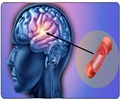Time is brain in acute stroke after vascular collaterals fail, and faster treatment yields better outcomes.

‘Time is brain in acute stroke after vascular collaterals fail, and faster treatment yields better outcomes.’





Researchers analyzed results from 658 stroke patients who were treated with tPA - a drug that dissolves blood clots. About half of the participants received the clot-busting drug at the hospital, and half received it while still in the ambulance. This preliminary study showed that three months after stroke, 182 out of every 1,000 patients treated before arriving at hospital were less disabled, including 58 patients who had zero disability, compared to people who received treatment after reaching the hospital.
"Time is brain in acute stroke after vascular collaterals fail, and faster treatment yields better outcomes," said May Nour, M.D., Ph.D., lead researcher, interventional neurologist and director of UCLA's Mobile Stroke Rescue Program. "Our study shows pre-hospital clot-busting is a promising, evolving approach to providing tPA stroke therapy. Its better outcomes could offset the increased costs of a mobile stroke unit."
Past research showed the sooner that a clot-busting tPA drug is given after an ischemic stroke - one in which a clot is blocking blood flow - the better patients fare. But tPA is not indicated and could hurt a patient's chances if they are having a hemorrhagic stroke, in which a blood vessel ruptures. That is why patients need a CT scan to confirm the type of stroke before receiving tPA.
Every second counts, in the current standard of care, patients who experience stroke-like symptoms and call 9-1-1 arriving to the hospital by ambulance are assessed by clinical examination and imaging (CT or MRI scan) in the Emergency Department. This takes a certain amount of time from the patient's symptom onset which prompted the 9-1-1 call.
Advertisement
Nour's team used data from Berlin's PHANTOM-S study, which took place from 2011 to 2015 and included 427 participants (median age 72) which were compared to 505 patients who received conventional care with in-hospital clot busting. Researchers analyzed information about patients' disabilities to determine how many needed to be treated in the mobile stroke unit to yield a greater benefit in disability outcomes when compared to patients who received tPA at the hospital.
Advertisement
"People should know the warning signs of stroke and call 9-1-1 as soon as they observe stroke signs," said Nour. "Treatment then needs to happen as quickly as possible, and a mobile stroke unit may allow that to happen."
Source-Eurekalert















